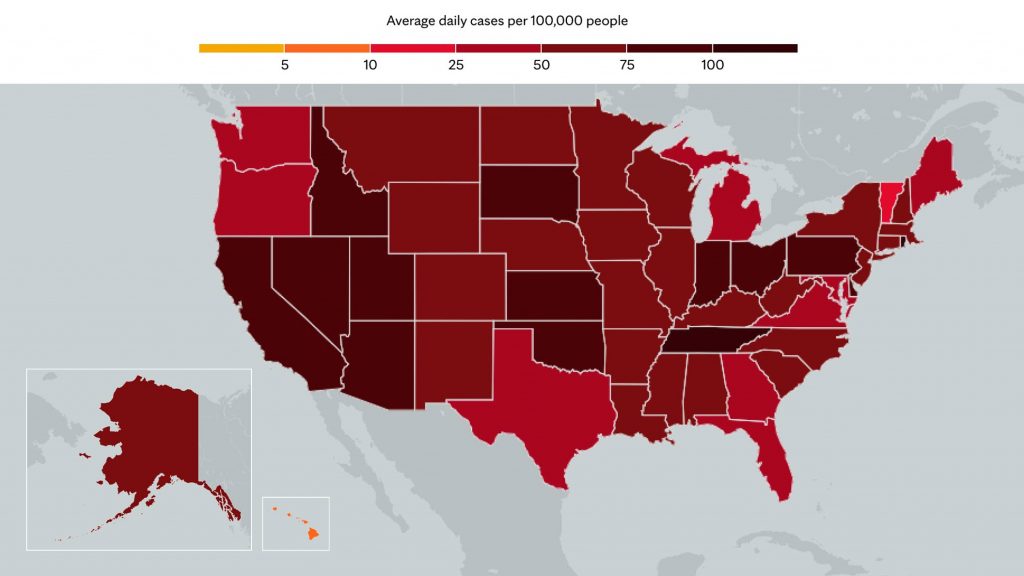-
COVID-19
New content on COVID-19 hot spots and other features added to Mayo Clinic’s Coronavirus Map

Mayo Clinic has added new features, data points and health advice from Mayo experts to its Coronavirus Map. This easy-to-use tracking tool provides data and trends on COVID-19 cases nationwide, along with Mayo Clinic guidance on how to protect yourself and others.
Recent enhancements include a hot spot map showing the average number of daily cases for the past week for every county in the U.S., plus Washington, D.C., and U.S. territories. The seven-day rolling average, which is calculated to smooth out fluctuations in daily case count reporting, is the most reliable indicator of infection hot spots.
The Coronavirus Map is fueled by a data pipeline designed in partnership with Mayo Clinic data scientists. The tool, which incorporates data and formulas used in predictive analyses to anticipate future disease trends, is just one of several features in Mayo Clinic’s COVID-19 resource center.
Here you'll also find guidance on:
- Total number of COVID-19 cases, and new cases per day by county and state
- How to protect yourself and others from infection
- What you need to know about COVID-19 vaccines
- Advice on holiday travel and safe holiday gatherings
- How COVID-19 survivors can donate convalescent plasma to help others
All content is available in English and Spanish.
Mayo Clinic has been a national leader in responding to COVID-19 since the early days of the pandemic. In March, Mayo announced an early test to detect COVID-19 infection, and Mayo Clinic Laboratories has been a national leader in COVID-19 testing, processing over 2 million tests. Also, Mayo was the lead institution to coordinate access to convalescent plasma for patients with severe or life-threatening cases of COVID-19.
Throughout the pandemic, Mayo Clinic researchers and experts have provided expertise to guide the public health response, and staff have been on the frontlines, providing lifesaving care for patients with COVID-19.
This week's start of nationwide COVID-19 vaccine distribution is an important milestone, but infections, serious illness and deaths continue to surge nationally. Mayo Clinic experts say it's vital that people continue to wear masks, wash hands frequently, avoid large gatherings and follow other health care guidelines to limit the spread of COVID-19.







